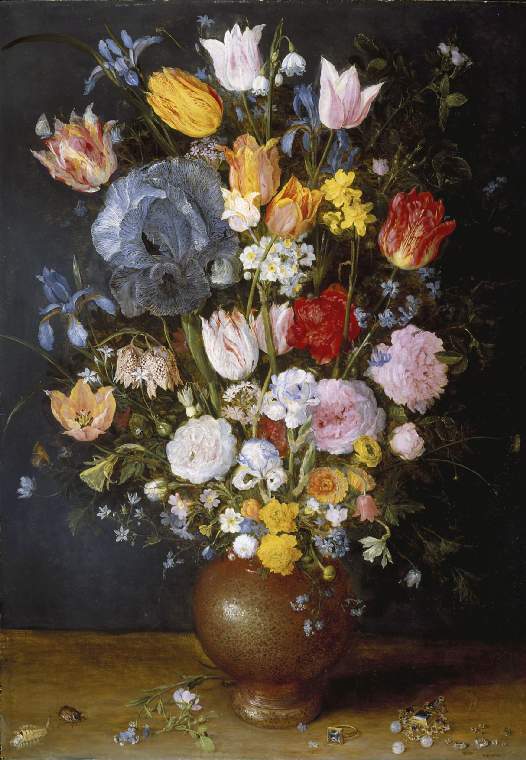There are few other museums which house such a wide scope of exhibits; artefacts from ancient egypt, Sudan, Greece and Rome; just a floor below painting, drawings and prints from European, American and Asian schools.
Museum Opening HoursTuesday - Saturday:
10:00 - 17:00
Sundays and Bank Holiday Mondays:12:00 - 17:00
CLOSED: Mondays, Good Friday, 24-26 & 31 December 2013 and 1 January 2014
Admission to the Museum's collections and to exhibitions is free. Visitors' donations help keep the galleries open and are much appreciated.
Every time I visit the Fitzwilliam I am taken aback by the fantastically exorbitant entrance hall. Every in of wall space; from the mosaic floor to the dizzyingly high glass dome ceiling is ornamented with neoclassical sculptures and intricate decoration. Two colossal staircases either side of the hall lead you up to the first floor; where Gallery 17, flower painting, is situated: the focus of my visit.Gallery 17 is vast and airy; a large arched window settles a cool light over the space. The mustard colored walls are bejeweled with the most decadent flower paintings from Dutch, Flemish and French artists from the 17th-19th centuries; most of them hung at eye level, so you can really get up close and admire the extraordinary detail in the artworks.

A STONEWARE VASE OF FLOWERS
Jan Brueghel the elder; painter; Flemish artist, 1568-1625
Oil on panel; 1607 — 1608; 60.3 x 42.2 cm
I decided to focus on this painting by Jan Brueghel the elder. The painting is a decorus abundance of fragile, papery looking blooms, leaves and stems harboring a dozen or more little insects.
The bouquet fits neatly within the width and length of the canvas, keeping all the blooms whole and uncropped. A few spindly stems and leaves are almost lost to the gloomy, grey black background. As the bouquet thickens, the less darkness is visible in the gaps between bloom so the flowers toward the center of the arrangement seem to almost glow.
The detail in the painting is astronomical. Such insignificant details such as the shadows created by a spider's leg or the subtle reflections of red light from the vase onto the pendant in the bottom right corner are completed with painstaking precision to the point where I can't imagine a human eye to be so observant or a hand to be so steady as to paint them. The paint is build up of many thin, subtle layers with just a small hit of texture on the coarser leaves and wrinkled flowers where more paint was needed to show every slight crease and vein.
While the technical skill in the painting is enough to engage you; the painting is very literal and shallow.There is nothing more to it; no symbolism or significance to it beyond being a beautiful painting. And while in this instance; I think virtuosity is enough, I want my own work to have both detail and narrative.





No comments:
Post a Comment